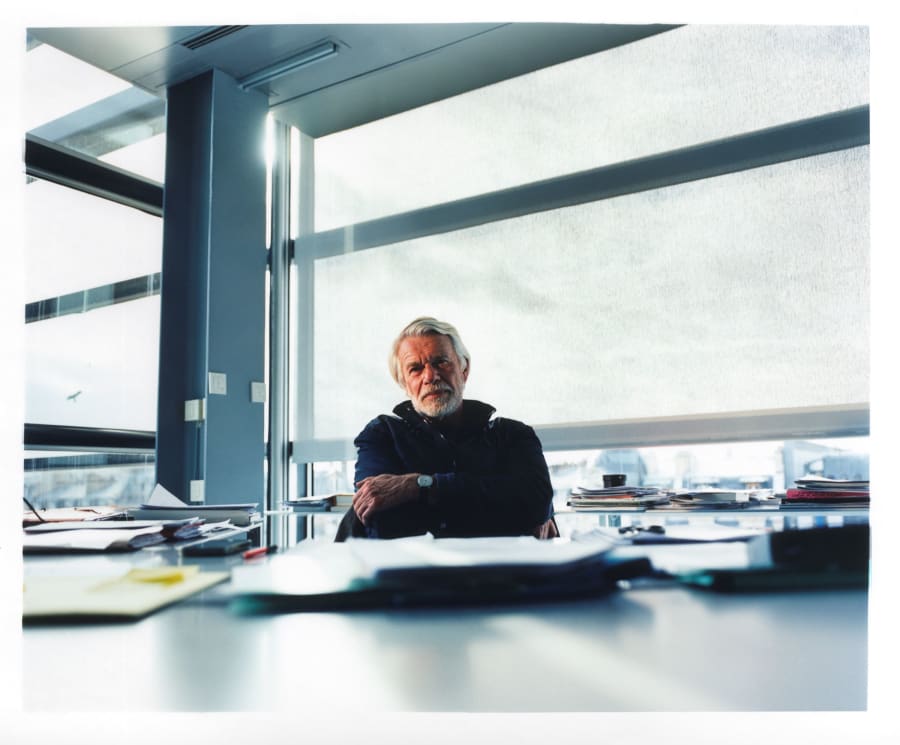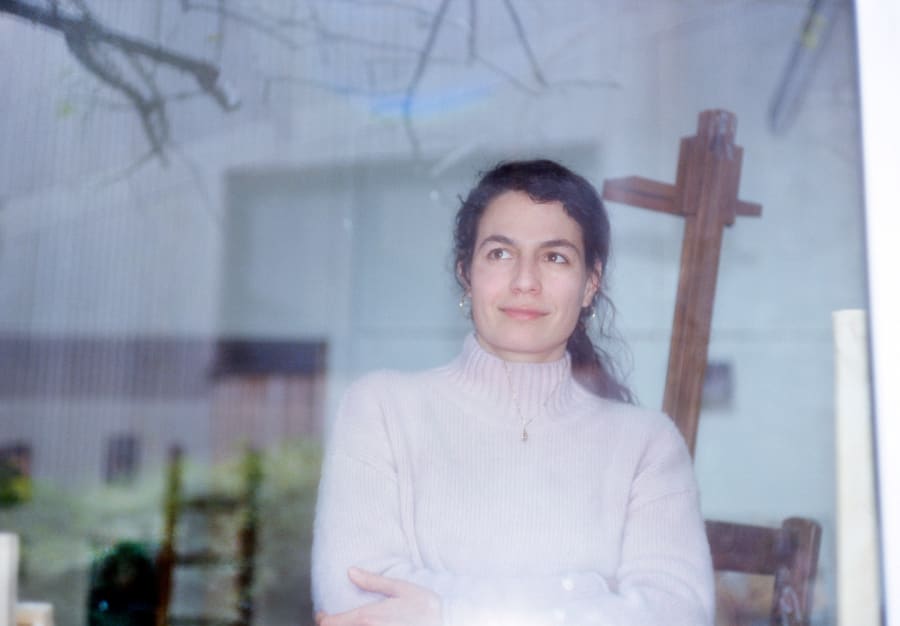When the French singer Serge Gainsbourg died in 1991, crowds of people filled the street outside his home in Paris’s 7th arrondissement. They sang his song Je suis venu te dire que je m’en vais (I came to tell you that I’m leaving) and left cabbages as offerings on the sidewalk in homage to his concept album ‘L’Homme à tête de chou’ (‘The man with the cabbage head’). Inside the house, his partner Bambou, his daughter Charlotte Gainsbourg, and her half-sister Kate Barry lay next to his body on his bed, listening to the throng outside.
‘It was moving to hear the crowd,’ whispers Charlotte softly in an audio guide for the house, which was opened up to visitors in its new incarnation as the museum Maison Gainsbourg in late 2023. A half-hour visit is accompanied by Charlotte’s voiceover in French or English, during which she reveals astonishingly personal details about what it was like growing up with her celebrity parents.
The legendary address of 5 bis rue de Verneuil originally served as stables for the large Parisian townhouse opposite. Gainsbourg bought it in 1969, moving in with his then partner Jane Birkin and extensively renovating it with the help of the British interior designer André Higgins. He cloaked the walls in black felt, an aesthetic touch borrowed from the 19th-century Joris-Karl Huysmans novel À rebours, and added Venetian checkerboard floor tiles to the ground floor and a black Axminster carpet covered in a chintzy floral motif through the rest of the house. As a result, the house feels like a Gothic manor – exacerbated by the museum’s choice to block out all of the windows to protect the interior from sunlight.
After Gainsbourg’s death, Charlotte bought her siblings’ shares of the house – and then promptly shuttered it, freezing it and its contents in time. The butts of Gainsbourg’s beloved Gitanes still molder in ashtrays dotted around the house; a forest of cosmetics bottles cover all available space in the bathroom; and the kitchen stocks pots of desiccated sweets, dubious-looking liquids in jars, and half-eaten chocolate bars still in the fridge. Although Charlotte openly spoke of her desire to one day turn it into a museum, the cast iron front gate remained closed to the public for more than 30 years.
‘For us, for the public, Gainsbourg is this mythic person,’ explained Sébastien Merlet, the museum’s curator. ‘But for Charlotte, it’s her dad. She needed to take the time.’
Gainsbourg himself had evoked the idea of the house being a museum. Showing a television crew around the capacious front room in 1979, he prophetically mentioned that he did not know whether it was ‘a sitting room, a music room, a brothel [or] a museum...’ Gainsbourg collected artwork – he had a Dalí and a Klee, a nod to art being his first love, and his initial vocation as a painter – and bric-a-brac, endless objects of varying utility. He hoarded items like policemen’s badges, small bronze statuettes of animals and vegetables, photos of women – usually naked, usually his lovers – and press clippings about his career.
‘I receive the beauty of objects, subconsciously,’ Gainsbourg wrote in his book Pensées, provocs et autres volutes. ‘On rue de Verneuil, in my museum, I have given each of them a soul. But the most precious object of all is me, because I’m destructible.’
His tendency to accumulate treasures undoubtedly helped to furnish a small museum at number 14 on the other side of the street, tracing the musician’s life and career through objects and archival material. Hidden among the crowded display cabinets are significant mementos, including a letter from Brigitte Bardot begging him not to release the recording of Je t’aime... moi non plus on which she sang, and sheet music from his early compositions played in Paris cabarets, long before he became a household name.
‘It’s cultural heritage. We want a new generation to discover Gainsbourg’s body of work,’ explained Merlet. To step into Maison Gainsbourg is to be swallowed up by the myth of the man, to unhesitatingly accept his status as icon. ‘For 20 years after he died, Gainsbourg was a totem of French music, really the god of la chanson française,’ Merlet continued. ‘Now, he is a bit more controversial, particularly after MeToo. He always pushed himself to the limit of what was acceptable, out of provocation.’ Neither the house nor the museum attempts to question Gainsbourg’s star status or address the various polemics he sowed and reaped throughout his career. The entire Gainsbourg site is an experience akin to visiting a shrine. For diehard fans, it is a chance to kneel at his altar; for a new generation, it is a carefully edited tour of his career and personal life.
The visit ends at the museum’s accompanying piano bar Le Gainsbarre, named after the singer’s rowdy, alcohol-fueled alter ego. White-shirted bar staff serve coffee and cocktails against the same black aesthetic backdrop as the house itself, while a motorized piano plays in the corner, its keys robotically depressing and lifting. In the evenings, a real pianist plays jazz in the dimly lit room, recreating the ambiance of the Paris cabarets where Gainsbourg’s story began.
Catherine Bennett is a writer based in Paris.
Caption for top image: Le Gainsbarre (detail, 1980 cover of Rock & Folk shot by Jean-Baptiste Mondino). © Alexis Raimbault for Maison Gainsbourg, 2023.
Originally published on May 14, 2024.


